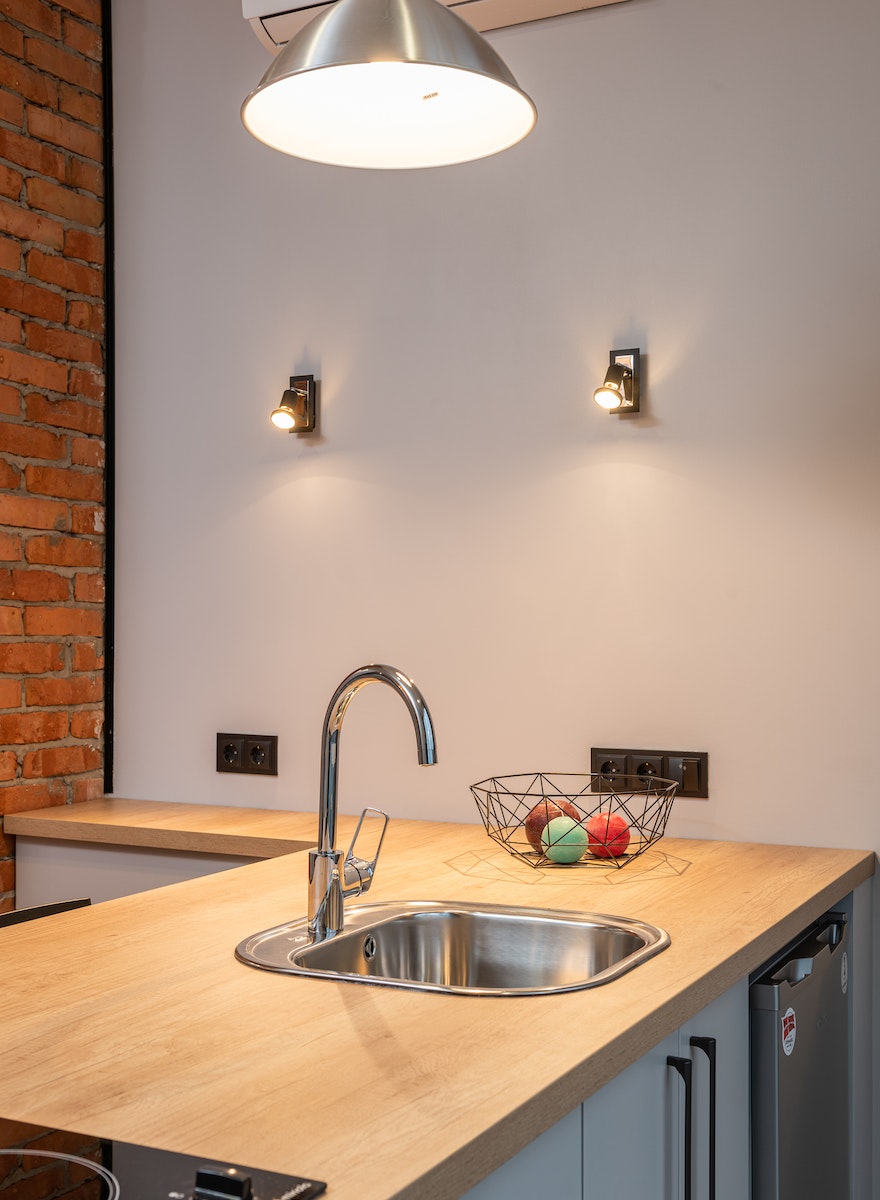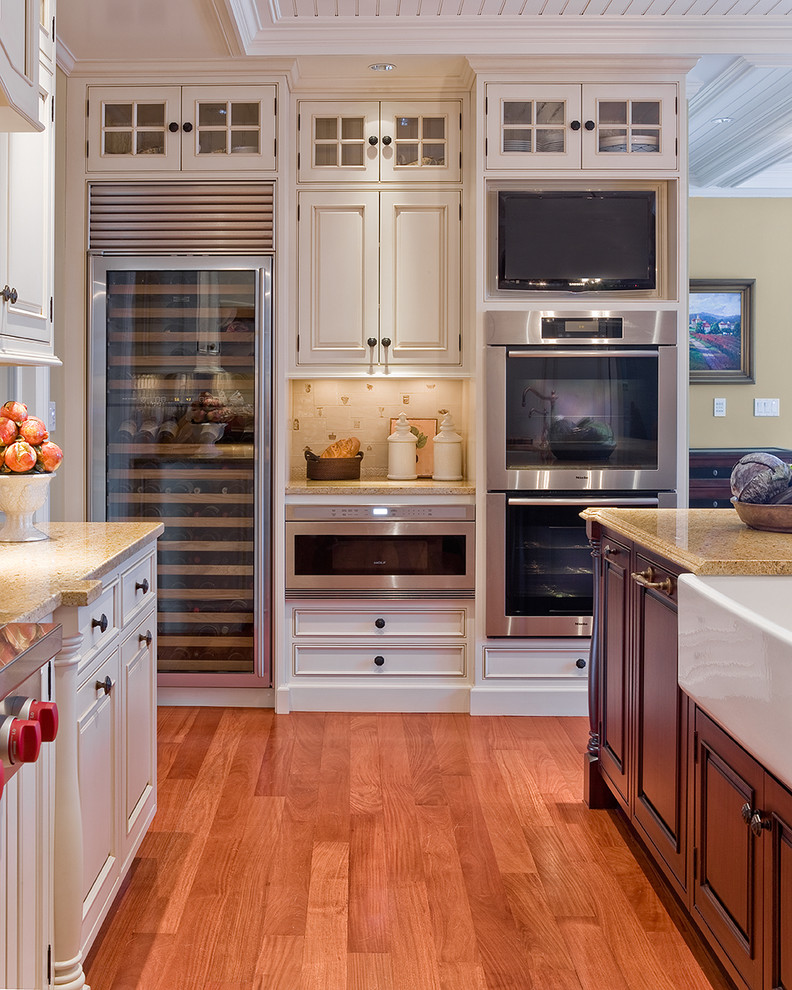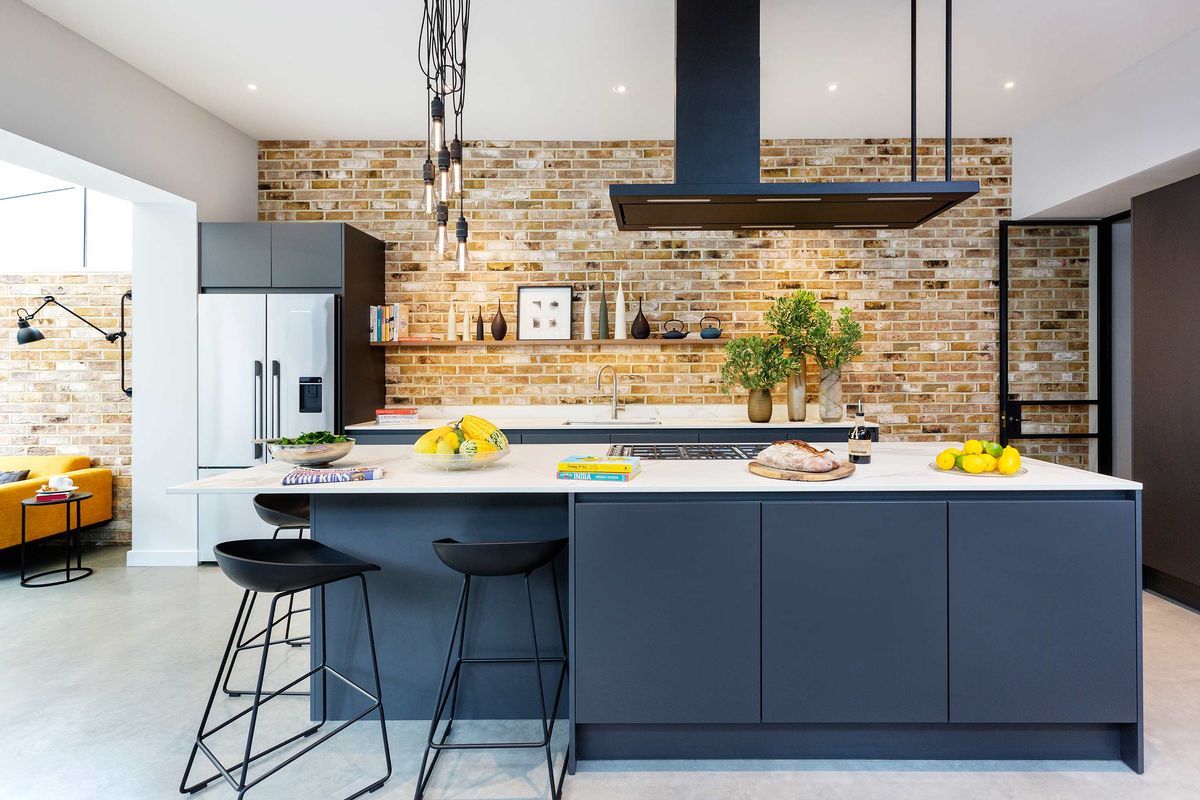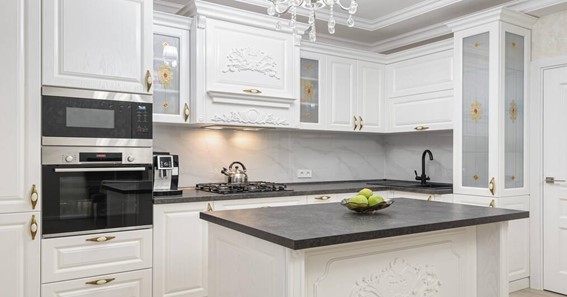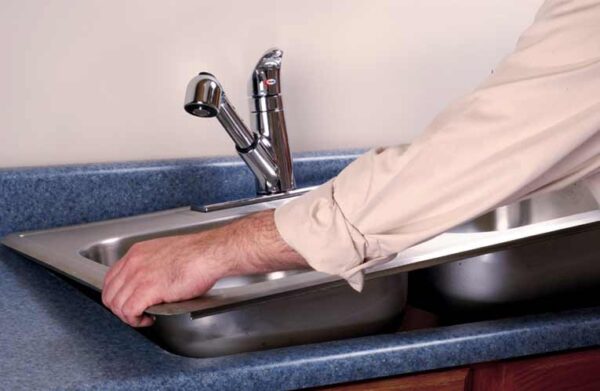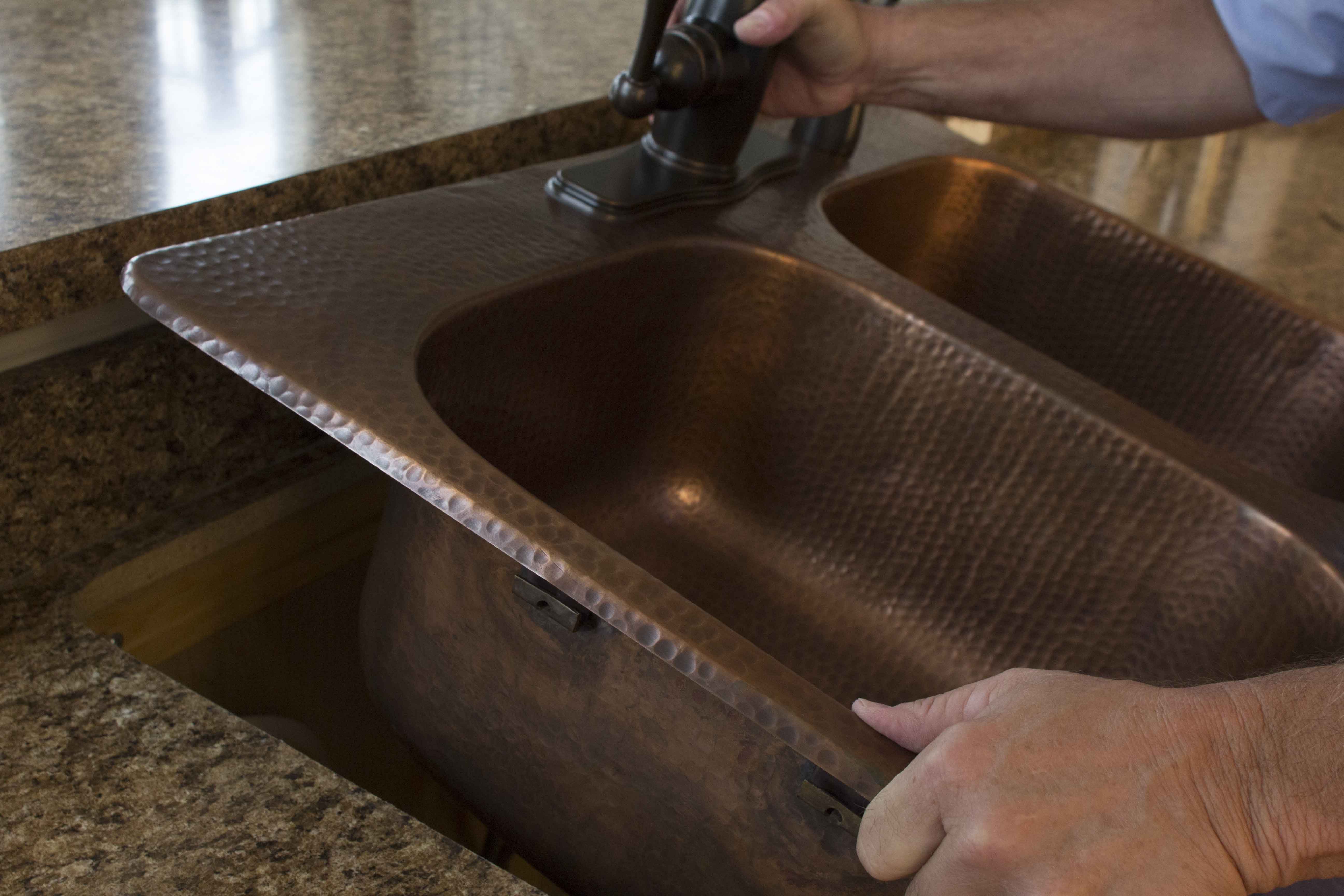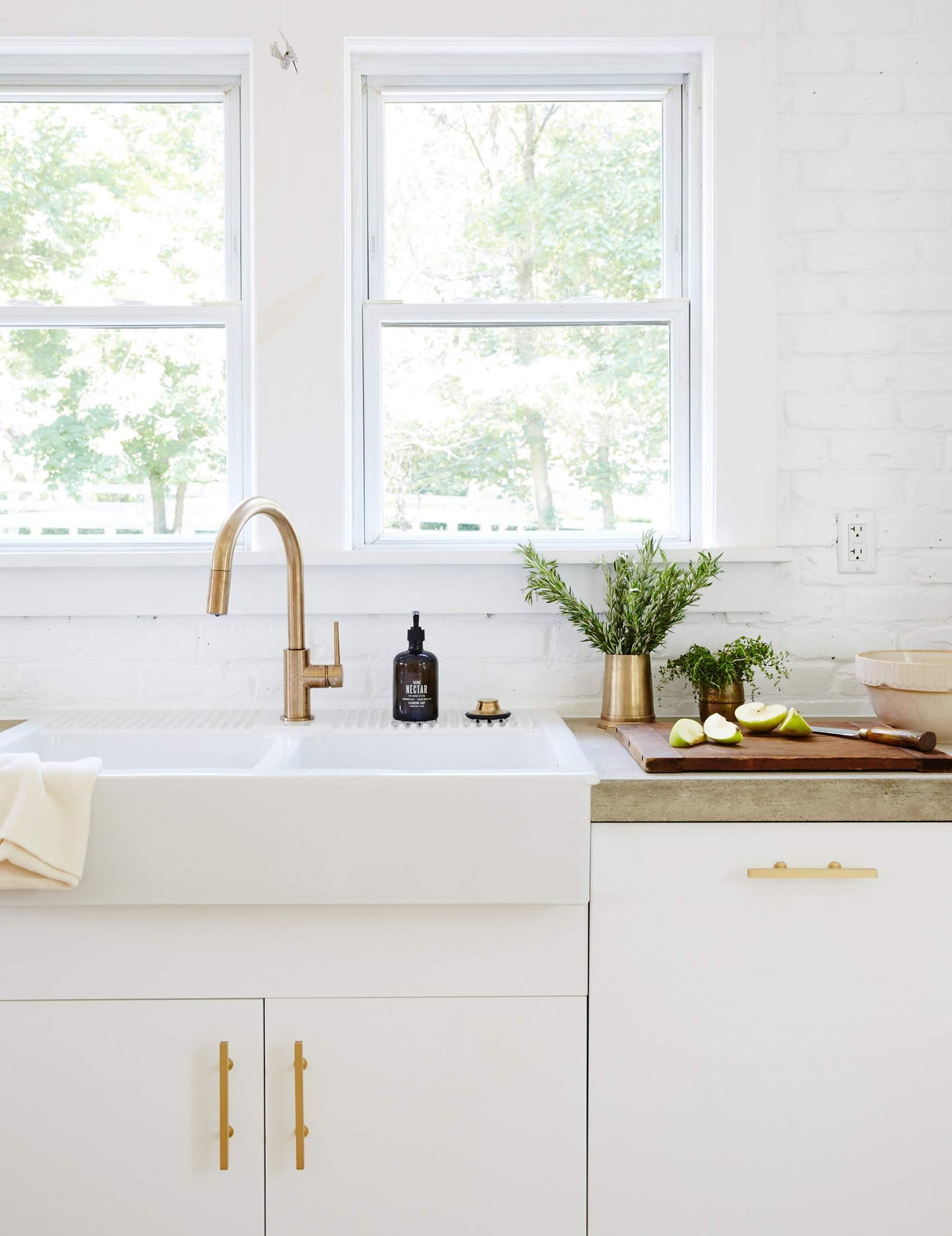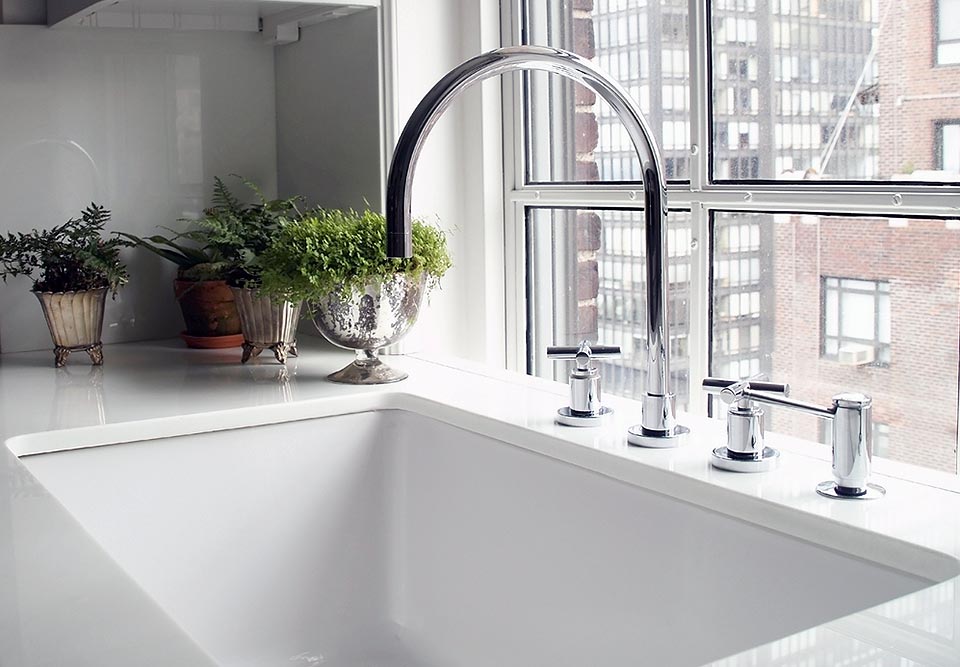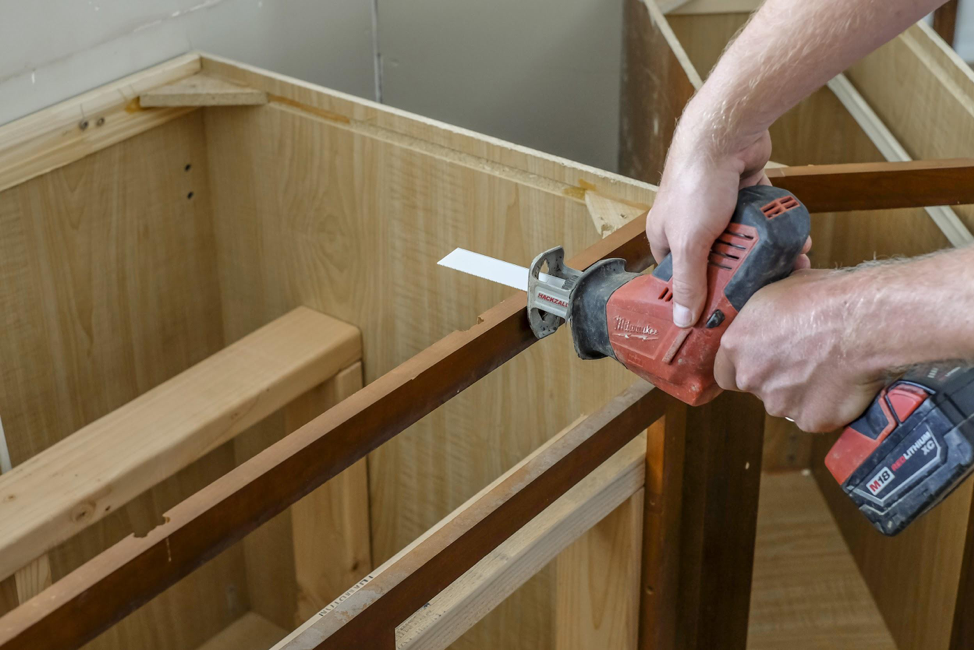If you've recently installed a new kitchen sink and noticed that it's not sitting evenly on your countertop, don't panic. Uneven sink installation is a common issue, but luckily, there are various solutions to fix it. In this article, we'll discuss the steps you can take to ensure a level and stable kitchen sink installation that will not only look great but also function properly.How to Fix an Uneven Kitchen Sink Install
Before we get into the solutions for fixing an uneven kitchen sink, let's first go over the steps to properly install a sink on an uneven countertop. This will help prevent any issues in the future. Step 1: Measure the sink and countertop - Before you start the installation process, make sure you have accurate measurements of both the sink and the countertop. This will help you determine if the sink is the right size for the countertop and if any adjustments need to be made. Step 2: Prepare the countertop - If your countertop is uneven, you'll need to level it before installing the sink. Use a level or straight edge to determine which areas of the countertop are uneven and mark them for later adjustments. Step 3: Install the sink's mounting brackets - Most sinks come with mounting brackets that attach to the underside of the countertop. Use these brackets to secure the sink in place. Make sure to follow the manufacturer's instructions for proper installation. Step 4: Secure the sink in place - Once the brackets are installed, carefully lower the sink onto the countertop and secure it in place using the provided screws. Make sure the sink is level before tightening the screws.How to Install a Kitchen Sink on an Uneven Countertop
Even with proper installation, there are still some common problems that can arise with an uneven kitchen sink. Below are some solutions to these issues: Problem: The sink is not level - If your sink is not sitting evenly on the countertop, you may need to adjust the mounting brackets. Loosen the screws and use a level to adjust the sink until it is level. Then, tighten the screws to secure it in place. Problem: The sink is not flush with the countertop - If your sink is not sitting flush with the countertop, you may need to add shims between the sink and the countertop. Shims are small pieces of material, such as wood or plastic, that can help level out the sink. Place them between the sink and the countertop until the sink is flush and then secure it in place. Problem: The sink is wobbling - If your sink is wobbling, it may not be properly secured to the countertop. Check the mounting brackets and screws to make sure they are all tight. If the sink is still wobbling, you may need to add additional support, such as adhesive or caulk, under the sink.Uneven Kitchen Sink Installation: Common Problems and Solutions
If you're a DIY enthusiast and want to tackle the uneven sink installation yourself, here are a few tips to help you achieve a level and stable sink: Tip 1: Use a level - A level is a handy tool that can help you determine if your sink is sitting evenly on the countertop. Use it throughout the installation process to ensure your sink is level. Tip 2: Check for gaps - If you notice any gaps between the sink and the countertop, it may indicate that the sink is not sitting flush. Use shims or caulk to fill in these gaps and create a more secure installation. Tip 3: Use a silicone adhesive - If your sink is not sitting securely on the countertop, you can use a silicone adhesive to help hold it in place. Apply a small amount of adhesive under the sink's edges and press it down onto the countertop. This will create a strong bond that will prevent the sink from shifting.DIY Tips for Leveling an Uneven Kitchen Sink
Uneven kitchen sink installation can happen for various reasons. Some common causes include: Cause 1: Uneven countertop - If your countertop is not level, it will affect how your sink sits on top of it. Use a level to determine which areas of the countertop need to be adjusted and make necessary changes before installing the sink. Cause 2: Improper installation - If the sink is not installed correctly, it can result in an uneven installation. Make sure to carefully follow the manufacturer's instructions and use the proper tools and materials for a successful installation. Cause 3: Low-quality sink or countertop - Sometimes, the issue may lie with the quality of the sink or countertop. If they are not made with high-quality materials, they may not sit evenly or securely on top of each other. In this case, it may be best to invest in a new sink or countertop for a more stable and long-lasting installation.Uneven Kitchen Sink Installation: Causes and Fixes
Follow these steps for a successful installation of a kitchen sink on an uneven surface: Step 1: Gather your materials - You will need a level, shims, silicone adhesive, and a screwdriver. Step 2: Prepare the countertop - Use a level to determine which areas of the countertop are uneven and mark them for later adjustments. Step 3: Install the mounting brackets - Follow the manufacturer's instructions to install the mounting brackets on the underside of the countertop. Step 4: Lower the sink into place - Carefully lower the sink onto the countertop and make sure it is level. If not, use shims to level it out. Step 5: Secure the sink - Once the sink is level, secure it in place using the provided screws. If needed, use a silicone adhesive for additional support.Step-by-Step Guide to Installing a Kitchen Sink on an Uneven Surface
Here are some additional tips and tricks to help you achieve a level and stable kitchen sink installation: Tip 1: Use a caulking gun - A caulking gun can help you apply a smooth and even layer of silicone adhesive under the sink's edges for a stronger bond. Tip 2: Check for leaks - After installing the sink, check for any leaks by running water and checking for any drips or puddles. If you notice any leaks, tighten the mounting brackets or add more adhesive to seal any gaps. Tip 3: Consider hiring a professional - If you're not confident in your DIY skills, it may be best to hire a professional for a perfectly level and stable kitchen sink installation.Uneven Kitchen Sink Installation: Tips and Tricks
To ensure a level kitchen sink installation, make sure to carefully follow the manufacturer's instructions and use a level throughout the installation process. It's also essential to properly prepare the countertop and use high-quality materials for a successful installation.How to Ensure a Level Kitchen Sink Installation
To prevent an uneven sink installation, here are some common mistakes to avoid: Mistake 1: Not properly preparing the countertop - Failing to level out the countertop before installing the sink can result in an uneven installation. Mistake 2: Not using a level - A level is a crucial tool in ensuring a level sink installation. Make sure to use it throughout the process to avoid any unevenness. Mistake 3: Not using the correct materials - Using low-quality materials can result in an unstable installation that may need to be redone in the future.Common Mistakes to Avoid When Installing a Kitchen Sink on an Uneven Surface
If you're unable to fix an uneven sink installation on your own, it may be best to hire a professional. They have the experience and tools to ensure a level and stable installation that will last for years to come.Professional Solutions for an Uneven Kitchen Sink Installation
How an Uneven Kitchen Sink Install Can Affect Your House Design

The Importance of a Properly Installed Kitchen Sink
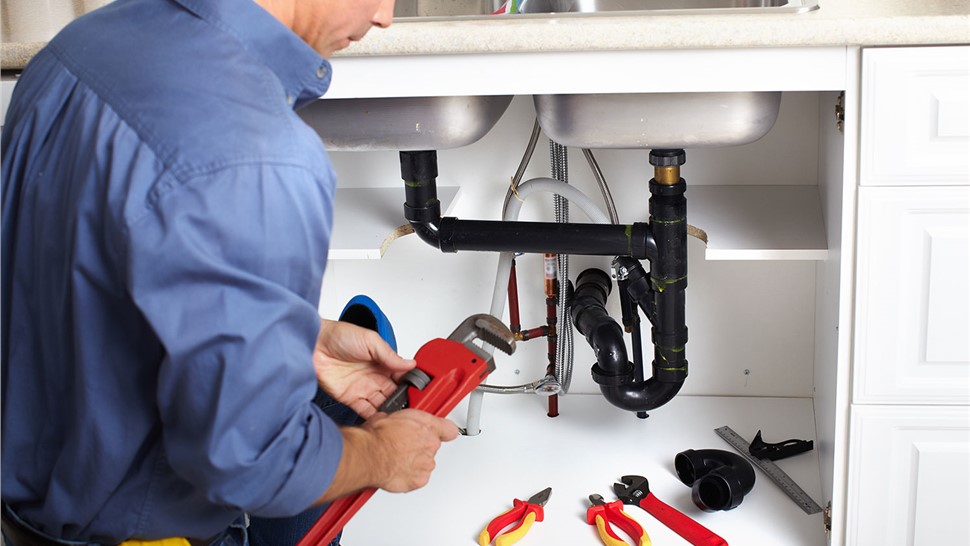 A kitchen sink is not just a functional element in a kitchen, but it also plays a crucial role in the overall design of the space. From washing dishes to preparing food, the sink is used multiple times a day, making it an essential part of any kitchen. However, if the sink is not installed correctly, it can affect the functionality and aesthetics of the entire kitchen. This is especially true for an uneven kitchen sink install.
A kitchen sink is not just a functional element in a kitchen, but it also plays a crucial role in the overall design of the space. From washing dishes to preparing food, the sink is used multiple times a day, making it an essential part of any kitchen. However, if the sink is not installed correctly, it can affect the functionality and aesthetics of the entire kitchen. This is especially true for an uneven kitchen sink install.
The Downsides of an Uneven Kitchen Sink Install
 An uneven kitchen sink install can cause a variety of issues, both in the short and long term. Initially, it may not seem like a big deal, but over time, it can lead to serious problems. For instance, if the sink is not level, the water will not drain properly, leading to stagnant water and potential mold growth. It can also cause damage to the surrounding countertops, cabinets, and flooring. Furthermore, an uneven sink can be a constant source of frustration, making everyday tasks like washing dishes and cleaning more difficult.
An uneven kitchen sink install can cause a variety of issues, both in the short and long term. Initially, it may not seem like a big deal, but over time, it can lead to serious problems. For instance, if the sink is not level, the water will not drain properly, leading to stagnant water and potential mold growth. It can also cause damage to the surrounding countertops, cabinets, and flooring. Furthermore, an uneven sink can be a constant source of frustration, making everyday tasks like washing dishes and cleaning more difficult.
Effects on House Design
 Apart from the functional and structural problems, an uneven kitchen sink install can also affect the overall design of your house. A crooked sink can throw off the symmetry and balance of the kitchen, making it look unappealing and unprofessional. It can also make the space feel smaller and cramped, disrupting the flow and functionality of the kitchen. Moreover, an uneven sink can be an eyesore, especially in an otherwise well-designed kitchen.
Apart from the functional and structural problems, an uneven kitchen sink install can also affect the overall design of your house. A crooked sink can throw off the symmetry and balance of the kitchen, making it look unappealing and unprofessional. It can also make the space feel smaller and cramped, disrupting the flow and functionality of the kitchen. Moreover, an uneven sink can be an eyesore, especially in an otherwise well-designed kitchen.
Preventing an Uneven Kitchen Sink Install
 To avoid the issues mentioned above, it is crucial to ensure that your kitchen sink is installed correctly. This involves hiring a professional and experienced plumber who knows how to properly level and secure the sink. They will also ensure that the plumbing connections are secure and that the sink is properly sealed to prevent leaks and water damage. It may cost more upfront, but it will save you from future headaches and expenses.
In conclusion, an uneven kitchen sink install can have a significant impact on your house design. It can lead to functional, structural, and aesthetic problems, making your kitchen less enjoyable to use and less attractive to look at. Therefore, it is essential to invest in a proper and professional kitchen sink installation to avoid these issues and maintain the functionality and beauty of your kitchen.
To avoid the issues mentioned above, it is crucial to ensure that your kitchen sink is installed correctly. This involves hiring a professional and experienced plumber who knows how to properly level and secure the sink. They will also ensure that the plumbing connections are secure and that the sink is properly sealed to prevent leaks and water damage. It may cost more upfront, but it will save you from future headaches and expenses.
In conclusion, an uneven kitchen sink install can have a significant impact on your house design. It can lead to functional, structural, and aesthetic problems, making your kitchen less enjoyable to use and less attractive to look at. Therefore, it is essential to invest in a proper and professional kitchen sink installation to avoid these issues and maintain the functionality and beauty of your kitchen.




/should-you-install-flooring-before-cabinets-1822043-hero-d8943faaa21940d08ba315c4d8087d06.jpg?strip=all)


:no_upscale()/cdn.vox-cdn.com/uploads/chorus_asset/file/19495086/drain_0.jpg)
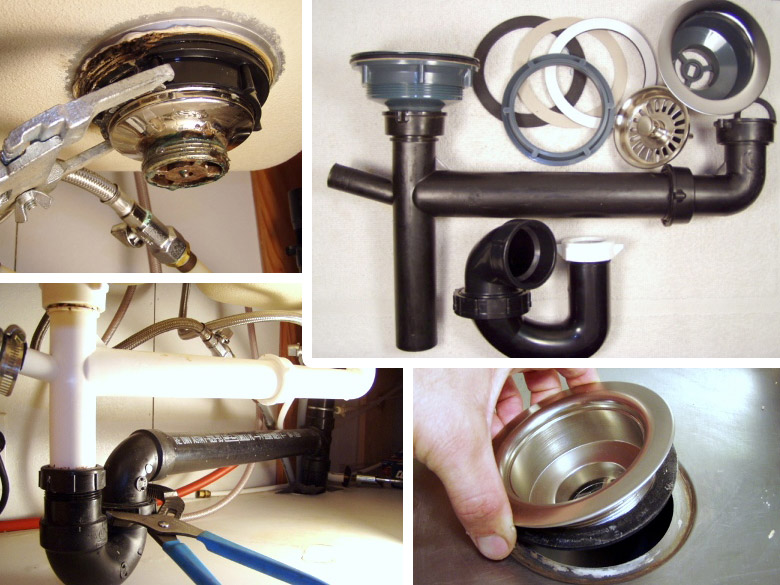








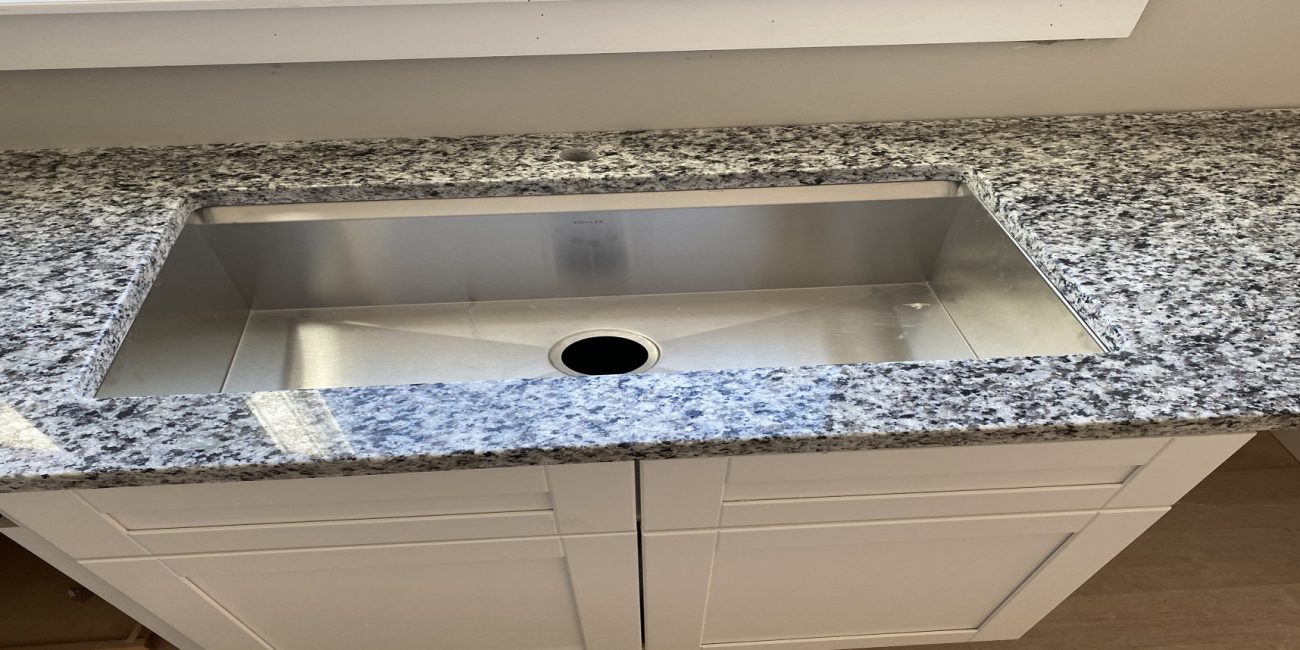


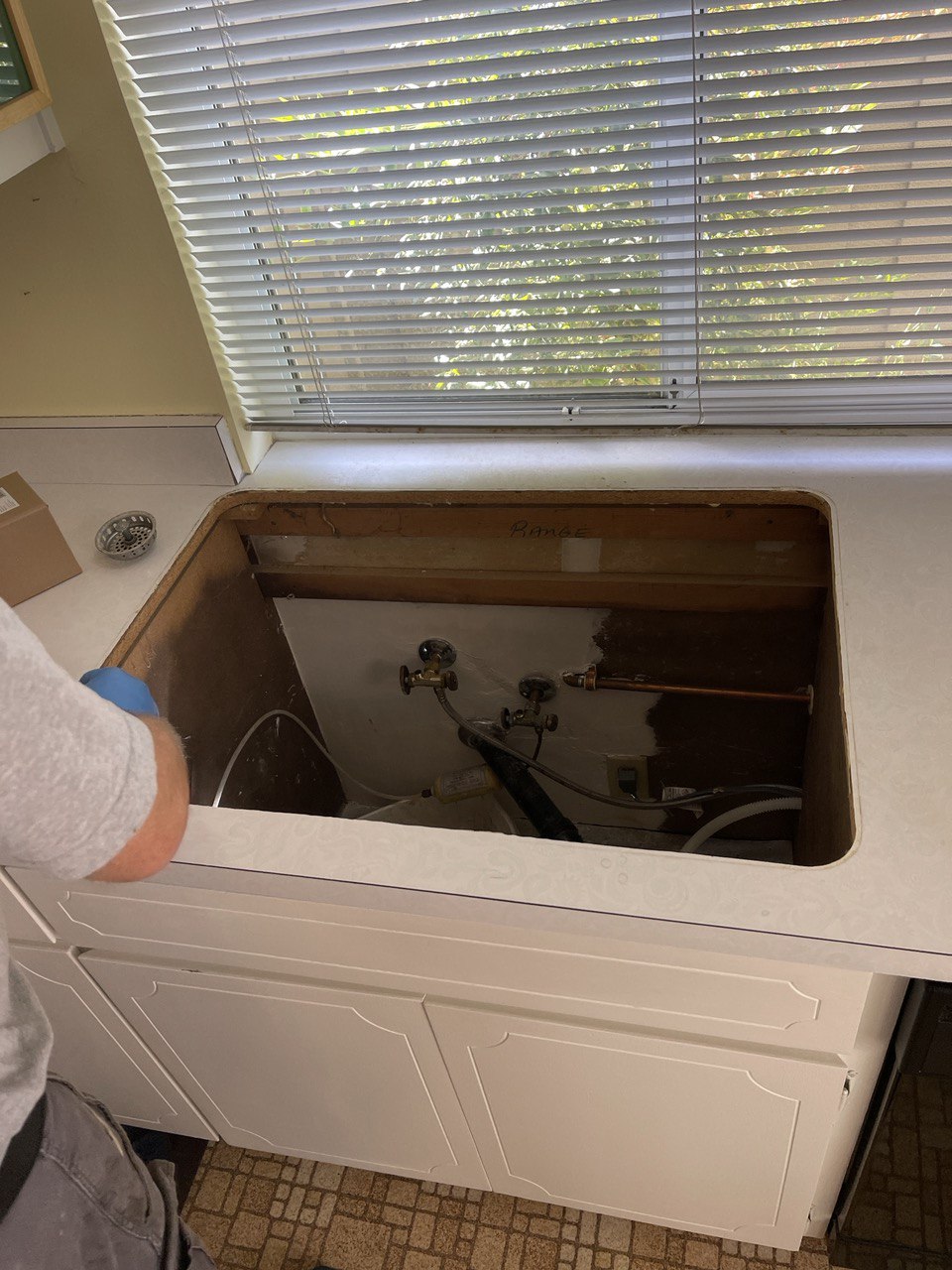





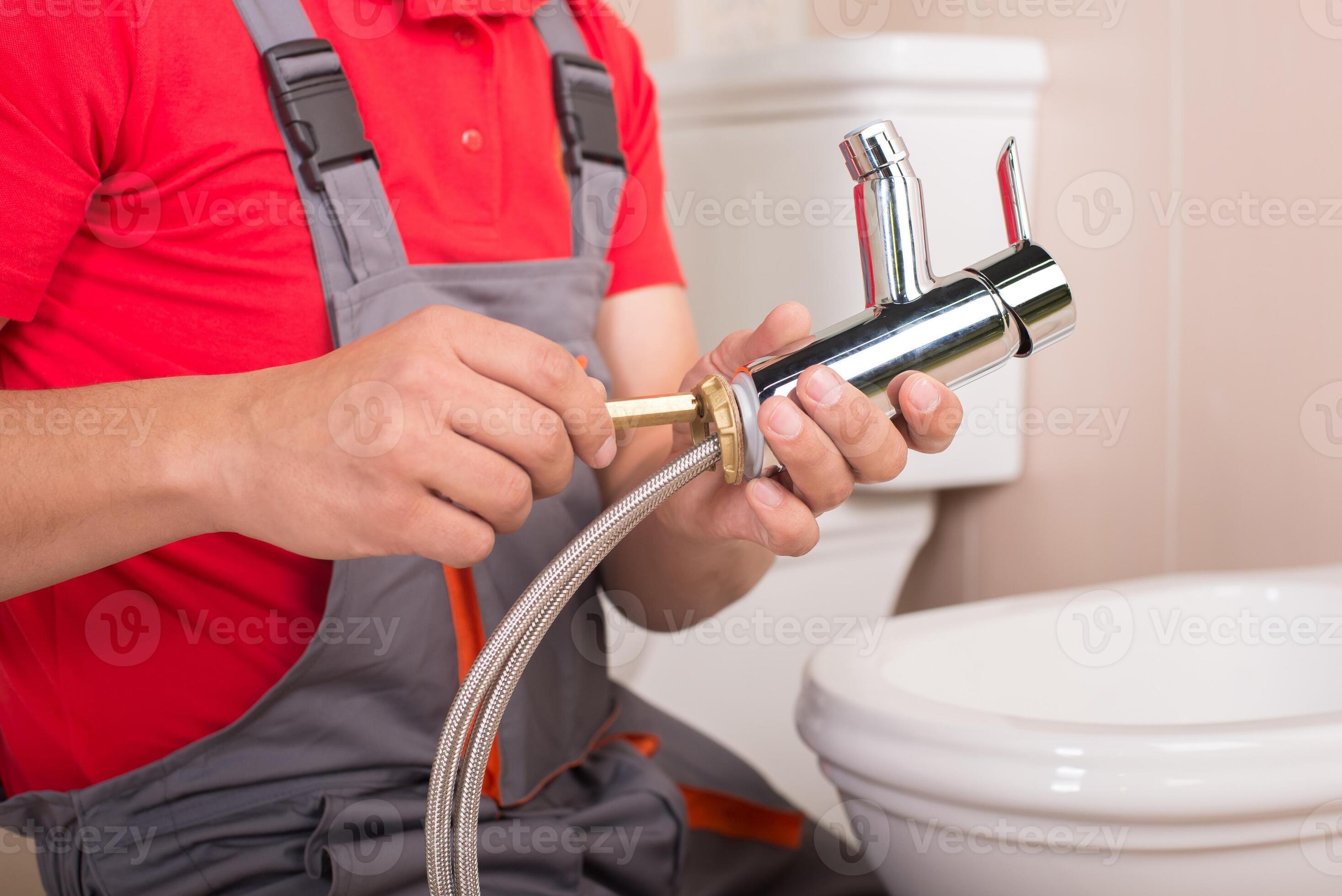









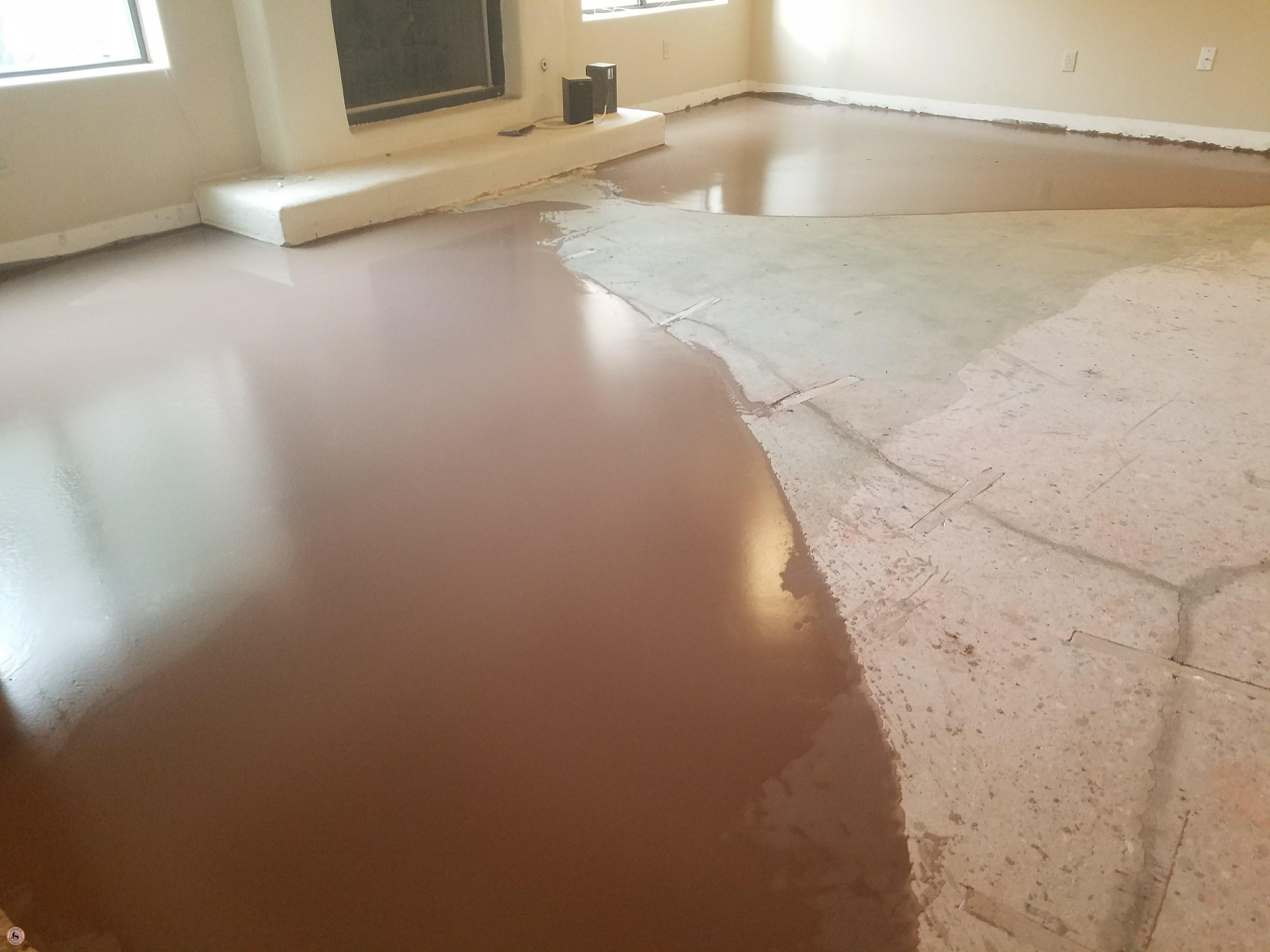







/how-to-install-a-sink-drain-2718789-hero-24e898006ed94c9593a2a268b57989a3.jpg)



